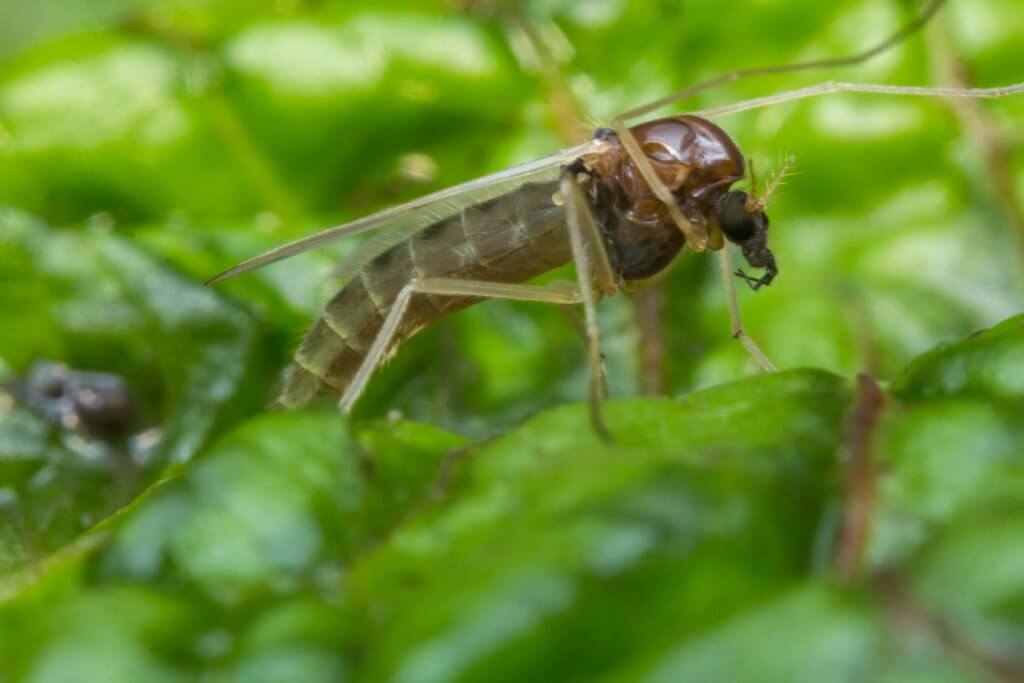
Many gardeners will tell you that of all the flying pests, gnats might be the most annoying. Though they are harmless, these little pests hover and buzz around our heads, driving us crazy. Gnats are also known as vinegar flies or fruit flies because of their intense attraction to the smell of rotten food. This explains why they particularly enjoy the areas around trash cans and drains.
Gnats are most commonly found around saturated house plants, fruit, compost piles, and other rotting, smelly food or plants. The biggest problem with gnats is that there is no such thing as one gnat. The fact is that one gnat can lay two to three hundred eggs in its two to four month life span. It is important to keep in mind that if you frequently see gnats hovering around your sink drain or trash can, there’s a good chance they are laying eggs inside your home.
If you do not want gnats around the key is to cut off their food supply. This means fruits and vegetables have to go in the refrigerator or in a bin the bugs cannot penetrate. It is also crucial to make sure house plants stay damp, but not wet, and they must have the proper drainage. Gnats particularly love over-watered house plants. Also be sure to empty trashcans regularly and do not allow rotting food to sit in the house since gnats can make a quick jump to your houseplants from these areas.
But even with doing all of this you may still be infested with gnats in your houseplants. Many people feel that your best recourse is using chemicals. The supermarket and hardware stores will carry several flying insect spray options for you to choose from.
Any one of these will take care of your gnat problem. It is crucial to check the back of the label to make certain it is not harmful to pets. If you have lots of houseplants and your home is experiencing an all-out infestation, you may need to look into a fogging product. Keep in mind that this will require you to seal off cabinets and anywhere else food and eating implements are stored. In addition you will need to take the pets and leave the house for the day.
If you do not want to use chemicals you can also get rid of gnats by using products found around the home. Gnats are highly attracted to the scent of vinegar. Simply fill a jar with vinegar and poke several holes in the lid. The adult gnats will climb into the jar, but the will not be able to climb out. For any gnats that remain in the house, try putting vegetable oil around your kitchen sink drain. Even though the gnats may have originated at your houseplants they are continually drawn to water even at your kitchen sink. Gnats that find themselves coated in the oil will be unable to breed.
The bottom line in getting rid of gnats is to act quickly before the infestation grows. If you have determined that they have originated in your houseplants you may want to consider the following methods:
· You may want to replace the top few inches of soil with a sterilized potting mix. In addition you can add a fine peat moss on top of your potting soil. This will help to deter the gnats.
· You can place the yellow sticky traps that will trap the flying adults near your plants.
· To keep the larvae from hatching place a ½ inch slice of raw potato on the surface of the soil. You will be able to discard the potato along with the larvae after about 2 days. You can repeat this process until the larvae are completely gone.